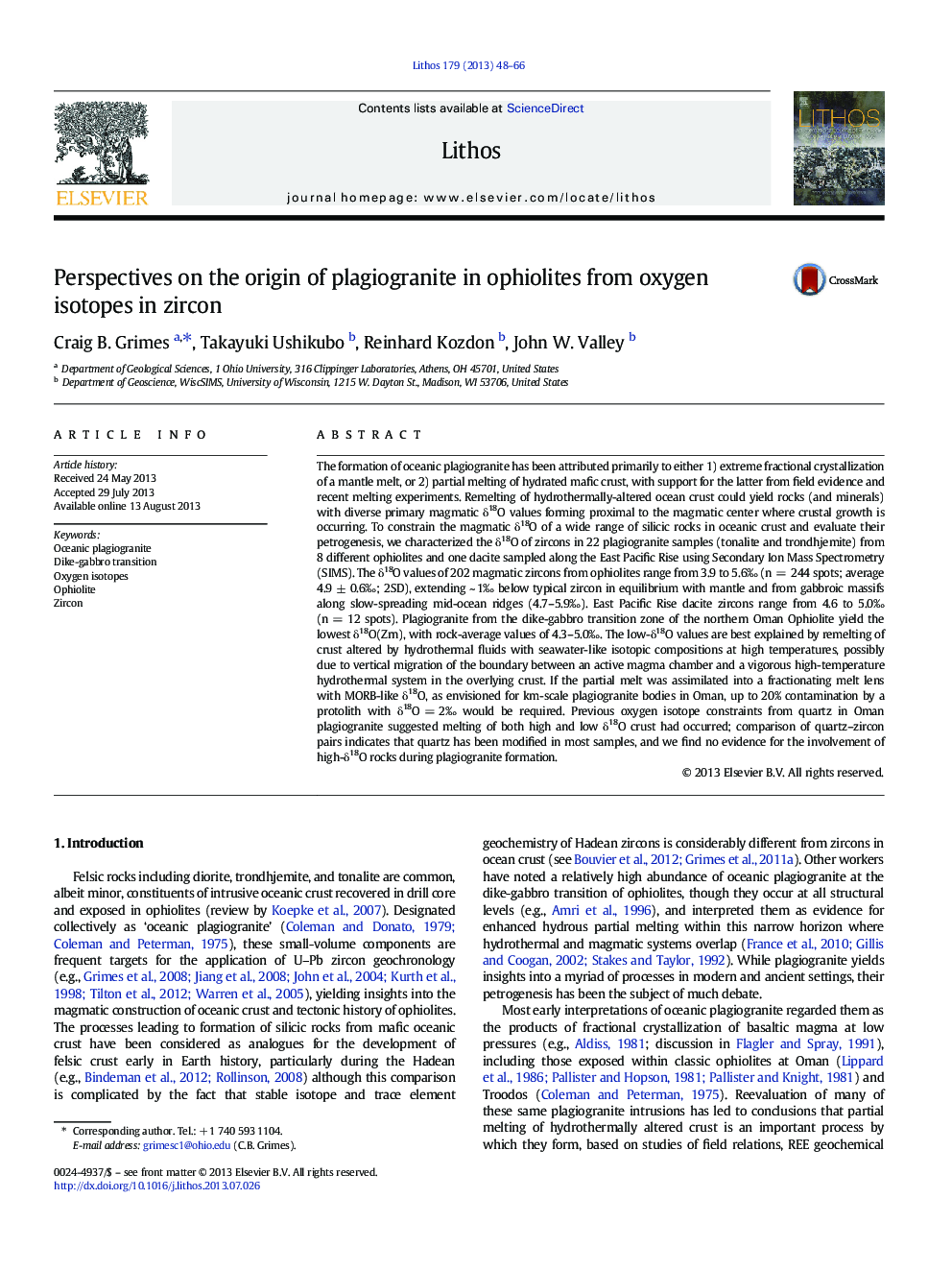| کد مقاله | کد نشریه | سال انتشار | مقاله انگلیسی | نسخه تمام متن |
|---|---|---|---|---|
| 4716204 | 1638686 | 2013 | 19 صفحه PDF | دانلود رایگان |
• The δ18O(Zrn) for plagiogranite from 8 different ophiolites and 1 dacite from the East Pacific Rise are reported.
• Magmatic δ18O(Zrn) are consistent with or mildly below mantle-like δ18O(Zrn).
• The low-δ18O values are explained by hydrous partial remelting of rocks altered at high temperatures > 250–300 °C.
• No evidence for the involvement of high-δ18O rocks is observed.
The formation of oceanic plagiogranite has been attributed primarily to either 1) extreme fractional crystallization of a mantle melt, or 2) partial melting of hydrated mafic crust, with support for the latter from field evidence and recent melting experiments. Remelting of hydrothermally-altered ocean crust could yield rocks (and minerals) with diverse primary magmatic δ18O values forming proximal to the magmatic center where crustal growth is occurring. To constrain the magmatic δ18O of a wide range of silicic rocks in oceanic crust and evaluate their petrogenesis, we characterized the δ18O of zircons in 22 plagiogranite samples (tonalite and trondhjemite) from 8 different ophiolites and one dacite sampled along the East Pacific Rise using Secondary Ion Mass Spectrometry (SIMS). The δ18O values of 202 magmatic zircons from ophiolites range from 3.9 to 5.6‰ (n = 244 spots; average 4.9 ± 0.6‰; 2SD), extending ~ 1‰ below typical zircon in equilibrium with mantle and from gabbroic massifs along slow-spreading mid-ocean ridges (4.7–5.9‰). East Pacific Rise dacite zircons range from 4.6 to 5.0‰ (n = 12 spots). Plagiogranite from the dike-gabbro transition zone of the northern Oman Ophiolite yield the lowest δ18O(Zrn), with rock-average values of 4.3–5.0‰. The low-δ18O values are best explained by remelting of crust altered by hydrothermal fluids with seawater-like isotopic compositions at high temperatures, possibly due to vertical migration of the boundary between an active magma chamber and a vigorous high-temperature hydrothermal system in the overlying crust. If the partial melt was assimilated into a fractionating melt lens with MORB-like δ18O, as envisioned for km-scale plagiogranite bodies in Oman, up to 20% contamination by a protolith with δ18O = 2‰ would be required. Previous oxygen isotope constraints from quartz in Oman plagiogranite suggested melting of both high and low δ18O crust had occurred; comparison of quartz–zircon pairs indicates that quartz has been modified in most samples, and we find no evidence for the involvement of high-δ18O rocks during plagiogranite formation.
Journal: Lithos - Volume 179, 1 October 2013, Pages 48–66
